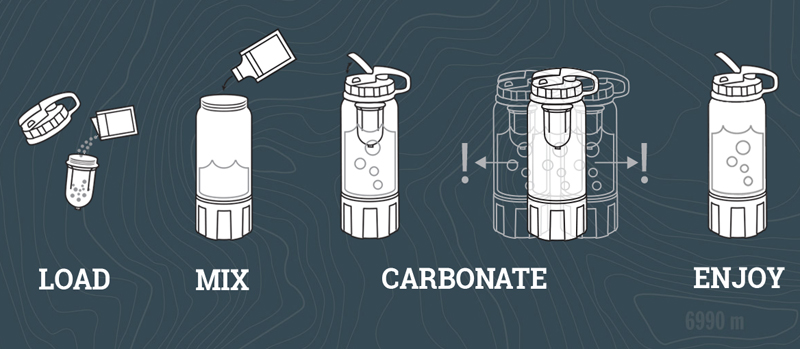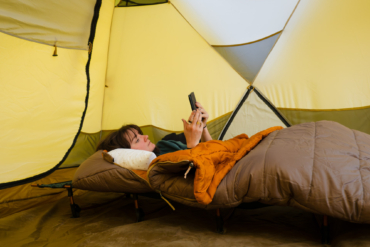
Who doesn’t want to end a long day on the trail by cracking open a cold one while they set up camp next to a remote alpine lake? Here in the Northwest, outdoor adventure goes hand in hand with flavorful microbrews. But there is always the dilemma — is it worth the extra weight?
For car camping or short hikes I can hear a resounding “Yes” echoing through the GearJunkie readership. But as the trip gets longer, and the total elevation gain higher, beer starts to slip down the priority list for most of us.
Until now.

Pat’s Backcountry Beverages Carbonator bottle and beer extract makes enjoying a full flavored microbrew at the ends of the earth a reality.

The website goes into all the nitty gritty details, but here it is in a nutshell:
Start with a nice 20oz. water bottle with a specialized top (the carbonator). Use it like normal during your hike. When you are ready to celebrate, find the coldest possible water (filter if suspect), add the beer extract (your choice between a Pale Ale or Black Hops – third flavor coming soon). Add the magic carbonating powder — just food grade citric acid and potassium bicarbonate that react with water to form C02 — shake, and wait a few minutes while trying not to drool.
Finally, release the pressure (it sounds satisfyingly like cracking open a cold one at home!), and enjoy 16 oz. of seriously legit beer.

The cost? The carbonator bottle goes for $39.95 (although we found it online for $30), the carbonator packets are 12 for $6, and the beer extract is $10 for enough to make 64 oz. (a growler).
After the initial investment for the carbonator, that works out to just a little less than a six-pack for $16. Not cheap, but not that much more than a high quality craft beer and, for good beer in the middle of nowhere, you really can’t go wrong.

The Pale Rail has a mild/moderate hops flavor, similar to the Deschutes classic Mirror Pond, while the Black Hops is equally hoppy but more robust, with a smooth malty finish. Think of your favorite Black IPA, then add an amazing view.
The Pale Rail tastes best to me on spring or summer excursions, while I am super excited to brew up the Black Hops at the top of South Sister after a Skimo ascent this winter.
Not into alcohol after a long day in the wilderness? No worries. Pat’s makes many soda extracts, including a fantastic ginger ale.
After extensive personal testing, I can offer a few tips.
> The colder the water, the better it will hold its carbonation
> Patience is a virtue, especially when making beer in the mountains. Let it carbonate (maybe while it chills in an alpine stream) a few minutes longer than you want to. It will be worth it
> Don’t drink the extract straight. It is over 50% alcohol by volume, and not worth it. But go ahead and taste the leftover drip after the packet is empty. That’s OK.

The taste of the beer? After living (and drinking beer) in the Pacific Northwest for the last four years, I’d be lying if I said it was the best I’d tasted. But it is really good. I will drink it again and again as I search for the perfect mountaintop vista.
Weight of the bottle is 9.8 oz. Weight of the extract and carbonator packets required to make each beer is 2.4 oz. So it’s not super light, but still a lot lighter than old-fashioned cans. And yeah, we know, whiskey is the backcountry classic and will probably remain so.
But man, a few cold brews that don’t weigh much, taste good, and cost just a bit more than a standard craft bottle? I’ll drink to that!





